Key Works to Unlock the Potential of Your Garage
For a successful garage conversion project, DevArt8 Construction takes care of the key elements that will transform this underutilized space into a functional and inviting part of your living area.
Garage Door Infilling
The process involves removing the garage door mechanism and filling the opening with brickwork or appropriate construction materials. This step is essential for structural integrity and aesthetics, seamlessly integrating the new living space with the rest of the house.
Floor Slab Levelling
If the existing garage floor is uneven, it may need leveling to ensure a smooth and stable surface. This will involve using a self-leveling compound or screed to create a flat base for further work.
Damp-Proofing the Floor
Inspecting the garage floor for moisture issues, addressing any cracks or gaps, and applying a high-quality damp-proof membrane to prevent moisture from seeping into the new living space. This is crucial to maintain a dry and comfortable environment.
Floor and Wall Insulation
Insulating the floor and walls to maintain a comfortable interior temperature. Depending on the type of flooring and walls (single-skin or cavity), we use suitable insulation materials to meet building regulations and maximize energy efficiency.
Windows and Doors
Choose high-quality windows and doors that complement the design and functionality of the converted space. Installing double-glazed windows helps with insulation and soundproofing, ensuring a comfortable and quiet environment.
First-Fix Services
This involves installing electrical wiring, plumbing, and joinery work. It involves planning the layout carefully ensuring adequate power outlets, lighting points, and plumbing connections for the intended use of the space.
Plasterboarding and Plastering
Applying plasterboard to the walls and ceilings, providing a smooth and even surface for paint or wallpaper. Plaster over the boards to create a polished finish, paying attention to corners and joints for a seamless look.
Finishing Touches
Installing new internal doors that match the overall aesthetic of the converted space. Adding moldings like skirting boards and architraves for a polished appearance. Choosing the final floor covering, whether it’s hardwood, laminate, tile, or carpet, and install the selected lighting fixtures for both functionality and ambiance.
Design and Structural Considerations When Converting a Garage
This transformation entails more than aesthetics; it encompasses the main works that breathe life into your vision, ensuring safety, functionality, and aesthetic appeal. For an assurance of successful conversion into an integral part of your home.
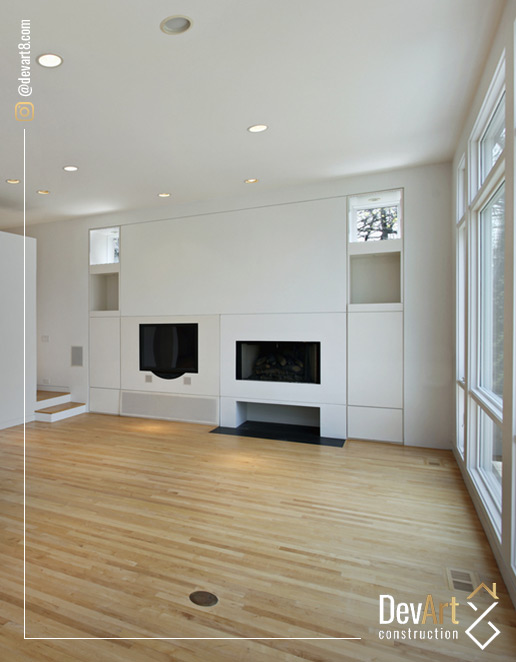
Space Utilization
Evaluating the intended use of the space and optimizing layout for functionality and aesthetics.
Structure Integrity
Assessing the garage's structural integrity, ensuring it can support modifications and additional loads.
Ventilation and Natural Light
Adding ventilation and strategically positioning windows/skylights for fresh air and natural light.
Insulation Strategy
Developing a plan for insulation to regulate temperature and soundproof the space, using high-quality materials.
Access and Entryways
Ensuring proper access to the converted space, considering interior access to the main house.
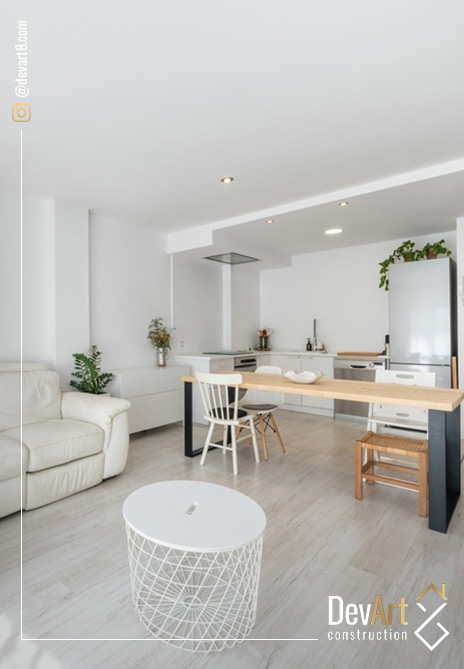
Aesthetics and Design Cohesion
Maintaining design cohesion with the existing home's architecture for a harmonious appearance.
Accessibility
If needed, we can make the space accessible with ramps, wider doorways, and accessible bathrooms.
Future-Proofing
Designing with flexibility to accommodate potential future needs or changes.
Layout Planning
Developing a thoughtful layout plan that optimizes space use and flow.
Floor Plan Recommendation
Tailoring the floor plan to the intended use while adhering to local building codes.
Load Bearing Consideration
Assessing load-bearing capacity and consulting structural engineers for wall movement or new features.
Foundation Requirements
Determining if the existing foundation meets needs; assessing for upgrades or reinforcements if necessary.

Space Ideas for Garage
Transformation
When it comes to repurposing your garage, the possibilities are virtually limitless. You can create various living spaces to suit your needs, including:
- Bedroom
- Office
- Playroom
- Studio Apartment
- Art Studio
- Family Room
With our guidance, you can explore these garage conversion ideas while staying within the bounds of local regulations and your budget.
Different Types of Garage Conversion Projects
Whether your garage is attached, integrated, or detached, we've got you covered. Here's a breakdown of the different types of garage conversion in Bay Area:
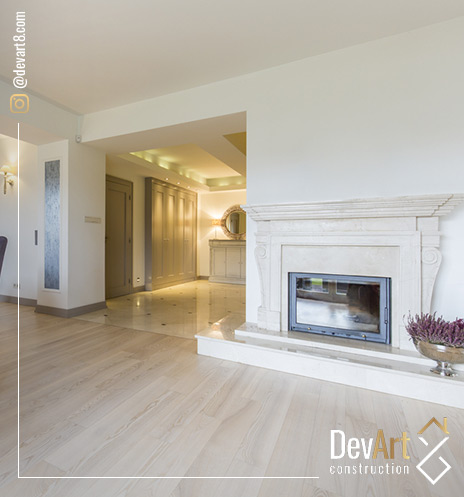
- Full Integral Single Garage Conversion: This is the most common and cost-effective option. An integral garage is seamlessly attached to your property within the main walls. Access is typically via an area of your home, often leading to a utility room or through the kitchen.
- Partial Garage Conversion: A partial conversion is ideal if you’re looking to balance the need for living space with garage storage and budget constraints. Typically, the rear portion of your existing garage becomes the new living area, allowing you to maintain front space for traditional garage use. A partition wall divides these areas.
- Double Garage Conversion: Need more room? A double garage conversion is as straightforward as it sounds – you will double your available space. Many homeowners allocate half the area for parking and storage while converting the other half for living space.
- Detached Garage Conversion: If your garage is separate from your main property, you’re looking at a detached garage conversion. This option involves more planning, including garage insulation, and may require planning permission. While it can be more costly, the results can be exceptional. Additionally, if it’s close enough to your house, you might consider adding an integrated passageway for convenient access.
No matter the type of garage conversion you’re considering, we’re here to guide you through the process and bring your vision to life.
Garage Conversion Regulations and Permits in Bay Area
Whether your garage is attached, integrated, or detached, we’ve got you covered. Here’s a breakdown of the different types of garage conversion in Bay Area:
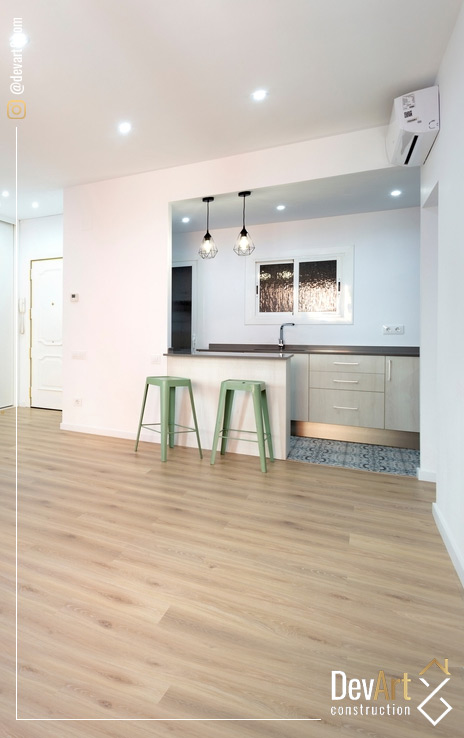
- Fire Safety: Ensure proper escape routes and fireproofing measures are in place.
- Ventilation: Implement moisture-proofing and efficient ventilation systems for safety and comfort.
- Thermal Performance: Insulate the floor, walls, and loft to meet energy efficiency standards.
- Acoustics: Incorporate soundproofing to maintain a peaceful environment.
- Electrics: Entrust electrical work to a qualified electrician to meet safety standards.
- Structural Concerns: Assess and reinforce beams, columns, foundations and other structural members as needed for structural integrity.
- Slab-on-Grade Caution: Before any saw cutting or breaking of a slab-on-grade, it’s essential to determine if it’s a post-tension slab. Cutting a tendon in these slabs can be hazardous and costly to repair.
- Homeowners Association (HOA): If your property falls under the jurisdiction of a Homeowners Association, exterior work, including garage conversions, requires approval from the Association. It’s the responsibility of the property owner to obtain this approval.
- Architectural Plans: Following architectural plan requirements is crucial, including: Site (Plot) Plan: Display existing buildings, structures, property lines, and nearby streets or alleys.Indicate distances between existing garage walls and property lines. Show the true North direction.Highlight existing and proposed parking spaces. Note that planning regulations typically mandate specific off-street parking requirements based on the number of bedrooms.
- Floor Plan: The Floor Plan should outline the existing rooms within the house and the new rooms resulting from the garage conversion. Clearly label the intended use of each room and provide comprehensive information to describe the scope and approach of the work.

The Types of Permits Needed
Based on the scope of your project, here are the types of permits typically needed for a garage conversion:
| Permit Type | Description |
|---|---|
| Building Permit | Required for a garage conversion to ensure compliance with local building codes and regulations, covering fire safety, ventilation, insulation, and structural integrity. |
| Electrical Permit | Essential if electrical work, such as wiring and outlets installation, is part of the garage conversion project, ensuring safety and code compliance. |
| Structural Permit | Needed if structural changes, like foundation assessment and reinforcement, are required to maintain the structural integrity of the converted space. |
| HOA Approval | Mandatory for properties under the jurisdiction of a Homeowners Association (HOA) to secure exterior modification consent, including garage conversions. |
| Architectural Plan Approval | Often required to gain approval for architectural plans, including site (plot) and floor plans, verifying compliance with zoning and land use regulations. |
| Planning or Zoning Permit | May be necessary to confirm that the garage conversion adheres to local zoning requirements and land use regulations, ensuring proper land utilization. |

More Living Space with Garage Conversion Services in Bay Area
DevArt8 Construction is your go-to full-service garage conversion contractor in Bay Area, ready to help you transform your unused garage space into living spaces, including dwelling units, bedrooms, bathrooms, offices, gyms and more.
Contact us today to increase your space, income and property value.
Detailed Cost Analysis for Garage Space Conversion
The garage conversion cost can vary significantly based on project specifics, such as intended use (e.g., a kitchen conversion costs more than a playroom), Bay Area location, and desired quality of finishes.
Rather than relying on general online pricing guides, we should provide a detailed project brief, as each project is unique.
Key factors influencing garage conversion costs include:
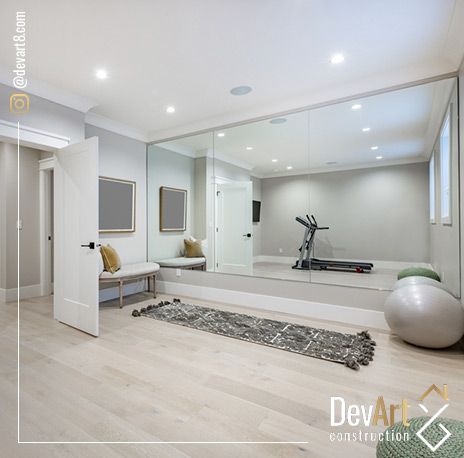
- Foundation Reinforcement: Costs may increase if the foundations require strengthening to support the conversion.
- Ceiling Height Adjustment: Elevating the ceiling to a height of 2.2m-2.4m above the external ground level, post-floor-level adjustment, can impact costs.
- Design Fees: Expenses associated with architectural design and planning.
- Planning and Permitting Fees: Costs related to obtaining necessary permits and agreements.
- Structural Engineering Fees: Fees for structural assessments and recommendations.
- Construction Cost: Costs associated with repairing walls, floors, or roof structures if needed.
- Inclusions: The elements you incorporate, such as a kitchen or bathroom.
- Underfloor Heating: Installation expenses for underfloor heating, if desired.
- Garage Type: Whether the garage is integral, attached, or detached from the main structure.
- Insulation Level: The extent of insulation required can vary depending on factors like the presence of a new room above.
FAQs
Start Your Project





